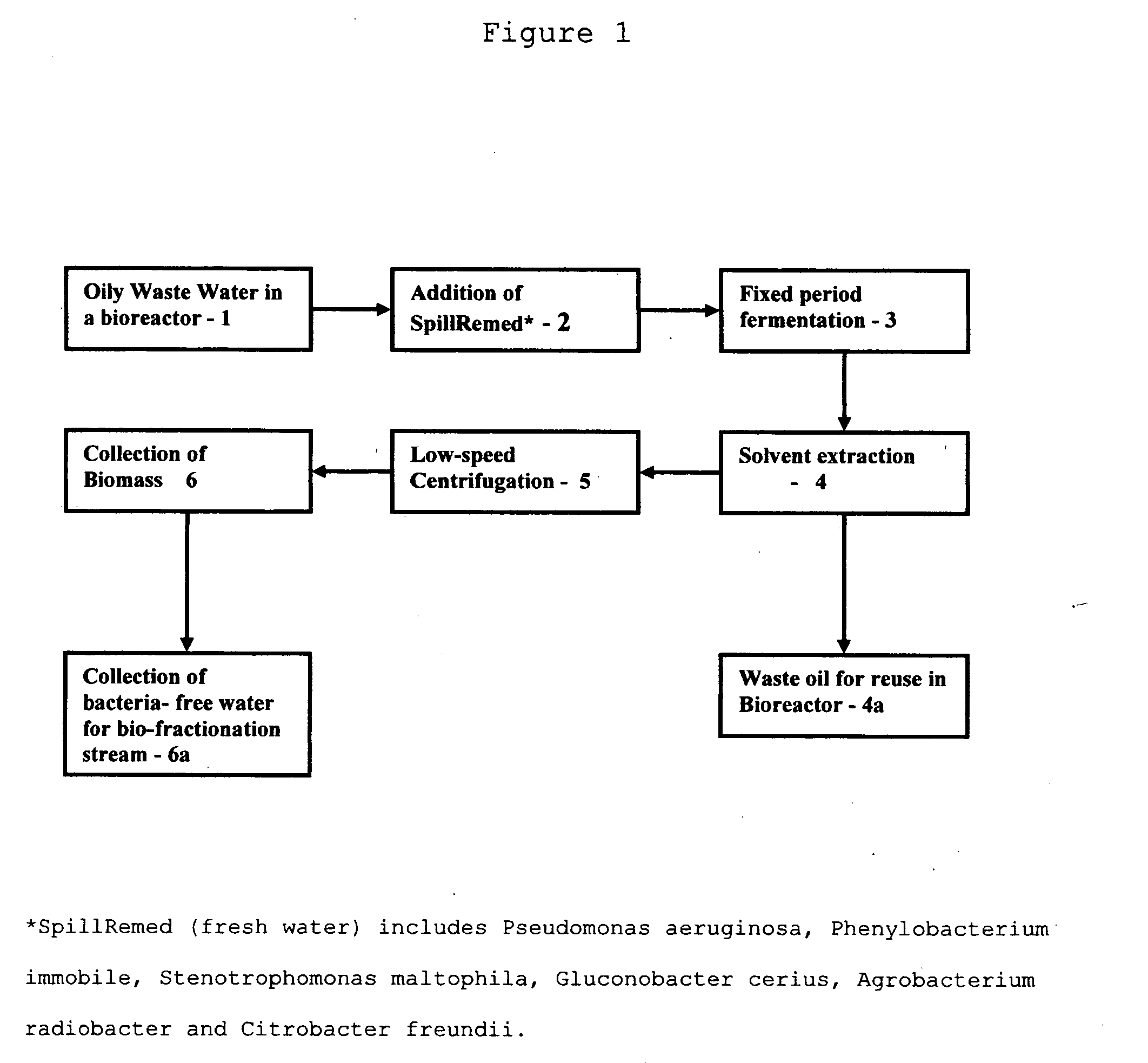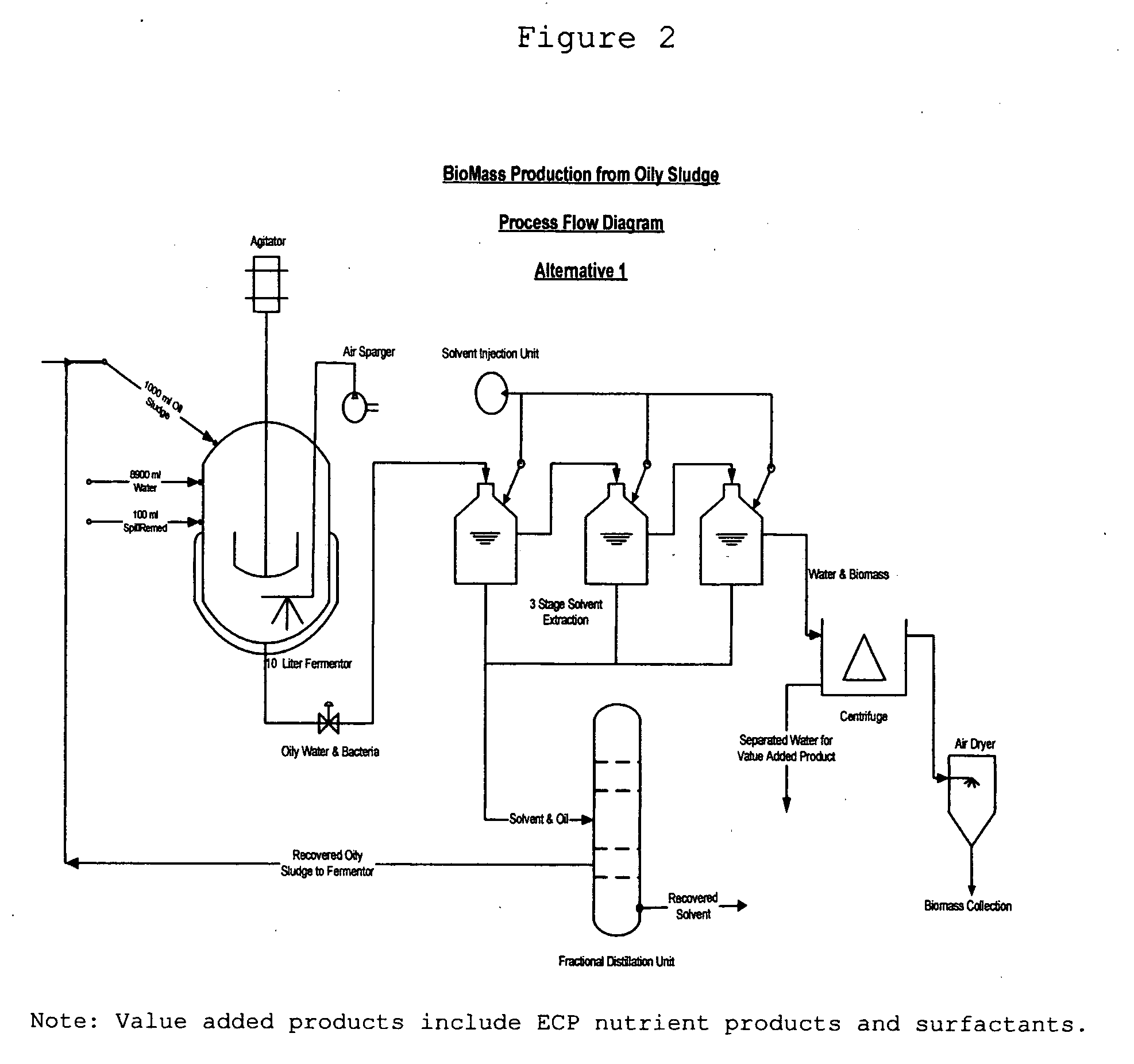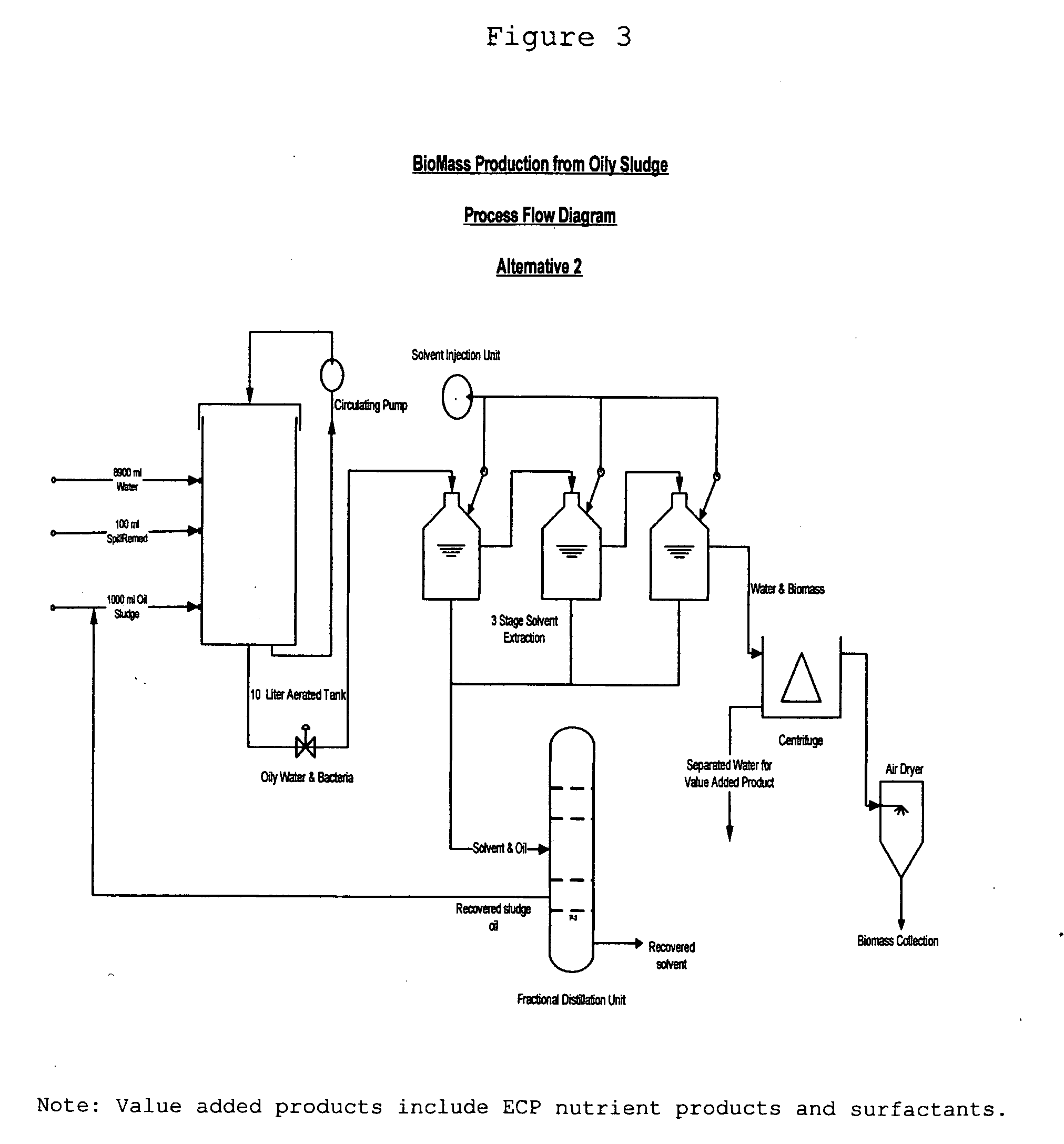Production of biomass and single cell protein from industrial waste oils, oily sludge from ships and other sources of oily wastes
a technology of industrial waste oil and single cell protein, which is applied in the field of biomass production and bioremediation of oil spills, can solve the problems of no waste product, limited methods of producing protein from hydrocarbons, and low attention to the production of protein from hydrocarbons, and achieves high yield
- Summary
- Abstract
- Description
- Claims
- Application Information
AI Technical Summary
Benefits of technology
Problems solved by technology
Method used
Image
Examples
Embodiment Construction
[0023] The concept of using oily sludge for production of Single Cell Protein (SCP) is entirely novel. The methods of the present invention use the activities of microbial cells to transform waste sludge oil from, e.g., ships, into beneficial biomass. The biomass produced yields many nutrients, and, also, bio-surfactants. In the process, the oil is extracted from the water and biomass, before separating the whole cell biomass from the nutrient rich cell free extract.
[0024] The present invention provides processes which may be practiced using simple bioreactors, in either a laboratory or in the field, to produce commercially viable biomass from waste industrial oil.
[0025] The flow chart in FIG. 1 shows some key steps in biomass production.
[0026] Important parameters for successful production of biomass have been listed by Bunker (1968) and are given below. [0027] 1. Rapid growth [0028] 2. Simple media [0029] 3. Suspended culture [0030] 4. Simple separation [00...
PUM
| Property | Measurement | Unit |
|---|---|---|
| weight | aaaaa | aaaaa |
| weight | aaaaa | aaaaa |
| weight | aaaaa | aaaaa |
Abstract
Description
Claims
Application Information
 Login to View More
Login to View More - R&D
- Intellectual Property
- Life Sciences
- Materials
- Tech Scout
- Unparalleled Data Quality
- Higher Quality Content
- 60% Fewer Hallucinations
Browse by: Latest US Patents, China's latest patents, Technical Efficacy Thesaurus, Application Domain, Technology Topic, Popular Technical Reports.
© 2025 PatSnap. All rights reserved.Legal|Privacy policy|Modern Slavery Act Transparency Statement|Sitemap|About US| Contact US: help@patsnap.com



